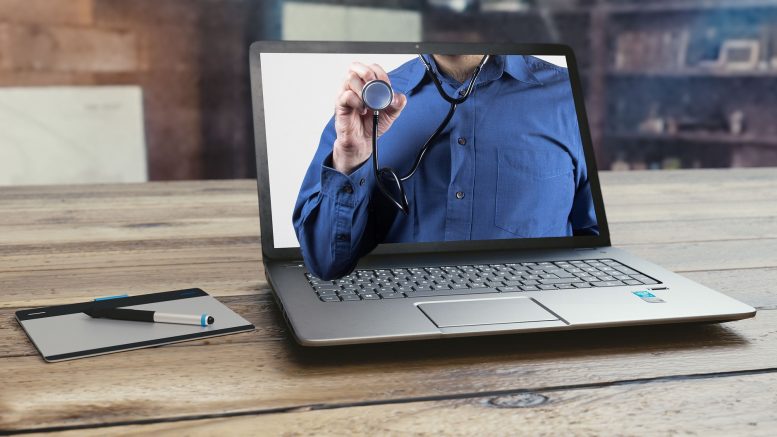Virtual care and telemedicine have been propelled to the forefront of healthcare provision because of the COVID-19 pandemic. As a result, healthcare providers, doctors and patients are all looking to what this means for the future of care provision and doctor-patient relationships.
There is no doubt that technology has played a huge role in helping healthcare providers to adapt to the new way of life that has been bought about by COVID. Replacing face-to-face contact with virtual and digital interactions has allowed doctors to continue caring for patients despite the significant strains placed on healthcare systems because of the pandemic.
Growing patient acceptance of telemedicine
In 2019, a survey undertaken by leading U.S. telemedicine provider Vivify found that only 17% of Americans said that they had access to remote care. In 2020, that figure rose to a massive 70% of respondents reporting that at least one of their providers now offers telehealth services. Alongside that increase in access has also come an increase in acceptance of telemedicine offerings, as patients embrace virtual care visits across all facets of healthcare.
In that same survey, 66% of respondents suggested that virtual visits would be sufficient to address some of their medical concerns and an additional 27% suggested that most of their medical needs could be met using telemedicine technologies.
Telemedicine and the changing face of doctor-patient relationships
When this topic was discussed at one of our recent monthly HealthTech RapidConf events, by members of our HealthTech Networking Club, Dr. Paula Muto, CEO of UBERDOC, highlighted how the concept of connected care is nothing new, with doctors and patients having had the ability to interact via telephone for decades. However, it is technology that has enabled us to develop and monetize that phone call.
“Improvements in technologies, in terms of efficiency and removing obstacles to care, has shifted and changed the way doctors connect with their patients in the comfort of their own homes.” comments Dr. Muto. Some of the most valuable aspects of telemedicine, are those that are working to enhance the doctor-patient relationship and to provide a more meaningful and proactive approach to care delivery.
Through telemedicine platforms doctors are finding that they can achieve a more intimate connection to the patient, which when combined with quantifiable metrics through the use of remote patient monitoring devices, or patient support apps, can lead to better outcomes and greater patient satisfaction.
Most importantly, and particularly so during the pandemic, telemedicine has been shown to drastically reduce the frequency of hospital admissions and visits to doctor’s clinics. This in turn frees up clinician’s time for more serious cases.
Telemedicine across the care continuum
Telemedicine is finding a home across all disciplines of health. At the same HealthTech RapidConf event Dr. Cristin A. Dickerson described examples from her own radiology practice where radiologists can be involved with the patient care through a secure messaging system. “When doctors need to communicate with patients directly, they have that luxury to ask questions and be more hands on which improves diagnostic accuracy, patient experience and patient journey.” comments Dickerson.
Speaking on the patient experience and journey with Dr. Nina Maouelainin who specializes in oncology, telemedicine is becoming the go-to care pathway, particularly for helping patients who live far away from hospitals or care centers. Tech gives them more access to care without taking time away to go to a faraway hospital. You can even ship them equipment and educate them while using it.
Likewise, the ability to introduce a multidisciplinary approach, so that patients don’t have to visit and talk to doctors separately, is proving to be appealing to doctors and patients alike. By having a conference call instead of multiple individual consultations the whole process of diagnosis, care provision and treatment can become much more efficient and convenient.
Telemedicine is making healthcare more equitable
Telemedicine is also yielding benefits in terms of providing more equitable access to healthcare services. Face-to-face consultations limit those who can be seen by a specialist to certain socio-geographic regions, or to those with the right connections, or insurance provision.
Telemedicine platforms that provide transparent prices that are cheaper than insurance, means that there is greater opportunity for more people to access the best doctors, and specialists, needed for their particular circumstances. With the problem of missed in-person clinician appointments skyrocketing during the pandemic, more, and more, specialist healthcare providers are switching to telemedicine platforms to help fill those appointments from a patient base that could potentially be anywhere in the world.
What does the future hold for telemedicine and the doctor-patient relationship?
Given the widespread acceptance of telemedicine as a digital-first approach to care provision it is hard to see this momentum not continuing after the pandemic. Every aspect of people’s lives now have a digital-first element and this demand is no less in healthcare.
The challenge for providers is ensuring that they offer exceptional experiences for patients and that digital care pathways are monitored closely to ensure that they offer the same standard of care, or better, than traditional approaches. Unlike other industries healthcare requires a strong level of trust in the relationship between care giver and patient and once that is lost it can be very hard to recover. As a result, technologies need to give doctors the tools to effectively support those necessary connections and relationships.
Telemedicine has now found a stable foundation following a fast evolution. According to Balint Bene, CEO of specialist HealthTech accelerator Bene : Studio, we need to build on this foundation and use technology in ways that can enhance the doctor-patient relationship whilst at the same time realizing efficiencies for healthcare providers. One way is to connect IoT home devices into the care pathway to help generate biometric and lifestyle data that can support and direct proactive interventions. We should also be looking for ways to use technology to automate processes and reduce workload burdens on doctors.
“We need to develop solutions to save time for the doctors. Seeing a patient online or in person requires the same amount of time, but technology can help reduce time in administration, patient data handling, alongside making predictions using AI etc..” describes Bene.
Want to be involved in future discussions of our HealthTech Networking club?
The invite-only networking club connects leading HealthTech companies, investors, healthcare providers and other key experts/players in the Healthtech industry providing private networking opportunities.
The networking club is free to join simply apply for an invite here.





